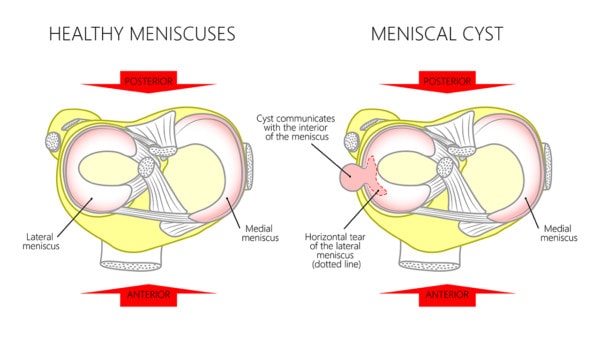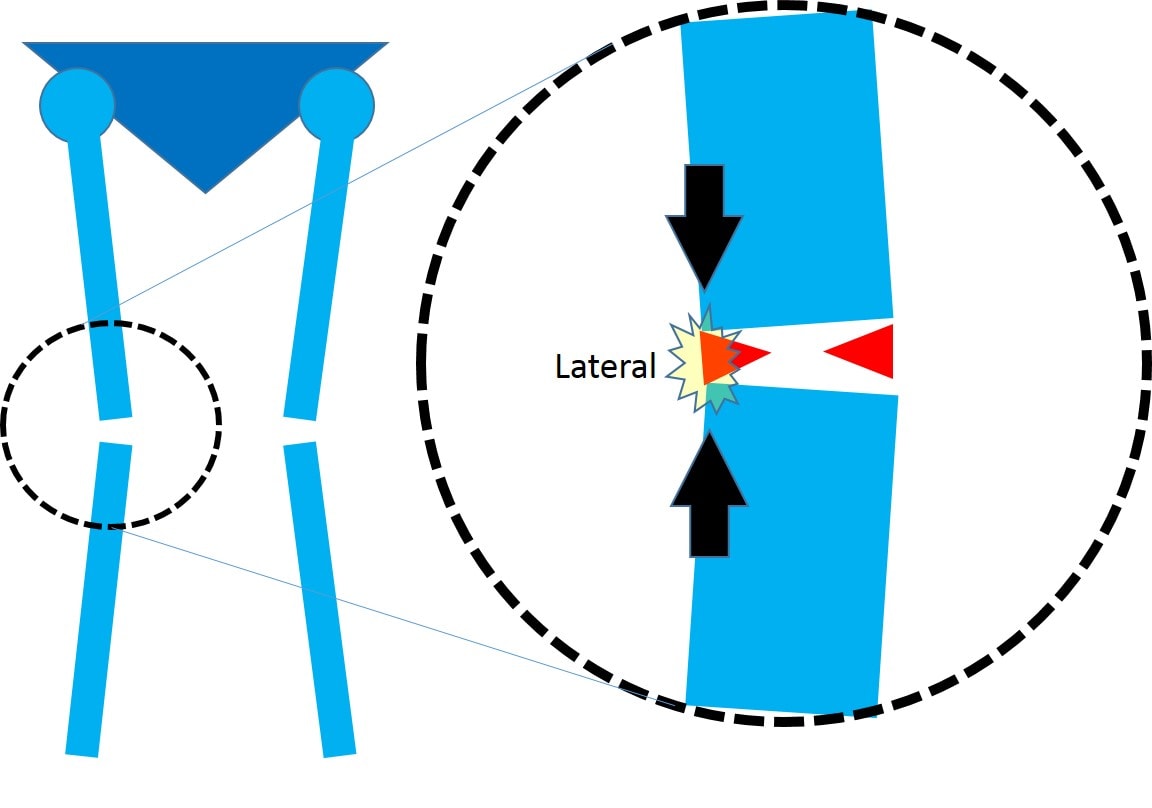What is a Meniscal Cyst? Why You Should Care about the Hole in My Meniscus
What is a meniscal cyst? This week I was preparing for a lecture and needed certain ultrasound images that I didn’t have, so I performed a knee ultrasound exam on myself to save examples. When I got to my lateral anterior (outside front) knee meniscus, a big hole in my meniscus jumped out off the screen. Yikes! The doctor had become the potential patient. A meniscal cyst is just that, a hole in the meniscus where a small part of the tissue has died off. While I’ve been having some vague aching in my knees, this meniscus cyst isn’t associated with severe pain and I can continue to perform high level exercise. However, why this cyst is present and what I plan to do about it are very important because they paint a picture of Orthopedics 2.0 in action.

Aksanaku/Shutterstock
Why do I have this hole in my meniscus?
I’m beginning to get a little knock kneed. I noticed this about a year ago as I put my feet together. My knees will touch first, before my heels touch. I also notice my knees when I catch my reflection while walking. Why would this cause my lateral meniscal cyst? I drew an exaggeration of my knees above, which in medical jargon is called a valgus deformity. Basically, as my knees move in this direction, the outside or lateral compartment gets more pressured and this puts more force on that lateral meniscus (the triangle I drew above). This added pressure has just been too much for my now 50 year old meniscus. It just doesn’t have the same natural stem cell population that it did when I was 30,. So while this amount of wear and tear could be maintained back then by my stem cells rushing in to repair the small amounts of damage, I just don’t have enough of them anymore to keep up that daily repair job – hence the cyst.
Okay, I have a hole in my meniscus, what should I do about all of this?
First, as above, the Orthopedics 2.0 approach as described in our e-book asks the question, “Why this is happening?” I know that in my case, irritated nerves in my back have caused changes in the way my feet hit the ground, so I need to shore that issue up first. Second, while my knees don’t hurt a lot, I know that saving this important shock absorber is a good idea, so we will employ proactive regenerative medicine. This means that under precise imaging guidance, I will have one of our doctors place platelets and stem cells into the meniscal hole to try and get it to heal. This last bit brings up an important point for all aging athletes. If you want to maintain high activity levels as you age, you must proactively deal with your musculoskeletal problems before your body falls apart! All too often I see wounded weekend warriors who have used the mantra “no pain-no gain” to their detriment. They wait until they can no longer function before seeking help and then sometimes it’s too late. What would have been an easy problem to fix becomes a huge issue that can no longer be put back to it’s native state. In fact, a quick ultrasound of the meniscus takes just a few minutes in the clinic and is cheap compared to an MRI. So if you want to keep your knees in tip-top shape, while you would think nothing of getting a annual blood test to check heart health, you likely neglect to go in for an annual check-up on your knees. After all, something as important as the shock absorbers that keep our knees healthy and working at maximum efficiency, may be worth a quick look!
The upshot? Staying active as you age is about being proactive. One of my favorite physician poets once wrote, “I’ve seen death come on slow as rust, or as quickly and suddenly as a door knob come loose in the hand…” All too often, I see aging athletes in the clinic who are as surprised as that person who grabs the loose doorknob that they can no longer enjoy the sport they love. They all just figured that they could keep running marathons, biking 100 miles a week, playing soccer, or hitting cross fit until they were 80, never thinking that periodic checks of the equipment and maintenance was required. These are the same folks that will take their car in for it’s annual checks and rotate their tires, but when it comes to their body, they believe it will just last forever…until that damn doorknob comes loose…
If you have questions or comments about this blog post, please email us at [email protected]
NOTE: This blog post provides general information to help the reader better understand regenerative medicine, musculoskeletal health, and related subjects. All content provided in this blog, website, or any linked materials, including text, graphics, images, patient profiles, outcomes, and information, are not intended and should not be considered or used as a substitute for medical advice, diagnosis, or treatment. Please always consult with a professional and certified healthcare provider to discuss if a treatment is right for you.
